
So after my bike ride last night I ran up the makerbot and began experimenting with the settings in skeinforge according to some helpful guides someone had put up recently. Skeinforge is a very powerful bit of software that can take an STL model and slice it into layers for the makerbot to build but it’s also something of a enigma in terms of user friendlyness. It has numerous settings and values most of which are hard to work out and trying to get a print out of it is tricky.
When I was using the old trusty BfB printer that I gave to Byrnie I used a set of comercial software called Netfab that had automated calibration and a whole host of nice features to facilitate good quality prints. However that only works for the BFB printer.
Anyway as per the recommendations on line I began with a simple profile and set the printer to make a standard test object a 20*20*10 mm cube. Normally with 3d printers rather than fill the whole object with plastic (which means a lot of plastic and often isn’t necessary for a strong print assuming your infill algorithm uses some sufficiently clever pattern) they create a solid outer shell then fill only a percentage of the internal ‘solid’ space. Now according to the tutorials the key for getting good prints is to get the flow rate of plastic right for a given layer size this is related to the amount of plastic the machine is pumping out (the speed of the motor driving the pinch wheel) the size of the nozzle (which is essentially a fixed value for most setups you can change it but you probably aren’t going to in the short term) and also the speed with which the print head moves as it’s extruding. As the plastic comes out and sticks to the base it gets dragged along by the print head so if the print head moves slowly you get a nice fat splurge of plastic (often used to make rafts at the base of prints to improve grip on the build area) if it moves much more quickly the same string of plastic is stretched out thinner to make smaller layers. So in the tests we want to see if there is too much plastic (and then increase the speed of the head or decrease the speed of the motor) or too little (and do the reverse). By using 100% infill there is no air space in the object which would allow extra plastic a place to go making it more difficult to spot if the extruder is pumping too much of the stuff out.
So with that in mind I ran up an object with the layer thickness of 0.32 Width/thickness 1.4 then a flowrate mm/s of 42.25 and a motor speed PWM of 255 (which is the maximum) with those settings locked in I ran up the test object and generated the gcode then set it printing. The results weren’t very promising
Way too much plastic the object stuck to the head as a result and got dragged about.
I upped the speed to 45 mm/s and tried again.
Slightly better but still not good. I decided to stick with only changing one variable so stuck with flowrate and increased things to 50 mm/s.
Still too much so 55 mm/s.
60 mm/s
and finally 65 mm/s
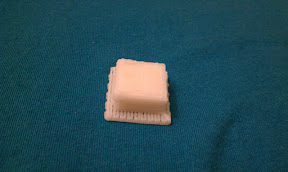
It might look like this was the first success but in this case I ran out of ABS filament mid print. It did look very promising though, a closer inspection suggested we still might be a getting a bit too much plastic but it might well have completed printing had I had the plastic to allow it to.
Here we can see the results side by side
You can see for each increase in speed the print got a bit further.
Having done all this work I might well be back to square one at this stage. I do have some more plastic waiting in the wings ready to go, in fact I have two lots black ABS and clear PLA but both of these might well exhibit different flow characteristics to the white ABS I was testing with. That may not be a total loss as the setting I was converging on had the print head moving very quickly possibly up to the limits it was capable of which would have an impact on the quality of the resulting objects so even if I had loads of white abs to play with I might well have done a series of more test to reduce the speed a bit as well as reducing the motor PWM to allow a slower print with the same correct amount of polymer.
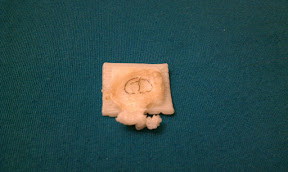


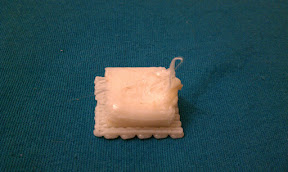
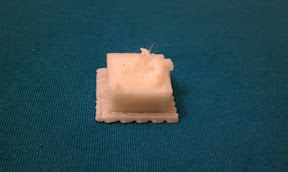
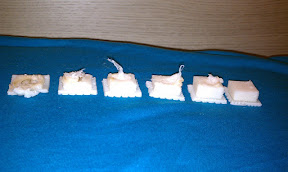
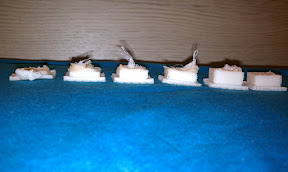
Comments
Love it! What are you going to make with all this? Bits for the bike?
Some upgrades for the printer. For the bike I already made a mounting braket for the led light (as the one that came with it was stolen along with bike no. 1). Fancied making myself a miniature to my own specs for the D&D game I'm playing.
Few other bits and bob's I've seen on thingiverse.com that I fancy trying out. Someone just put up a printable quadricopter that looks interesting.